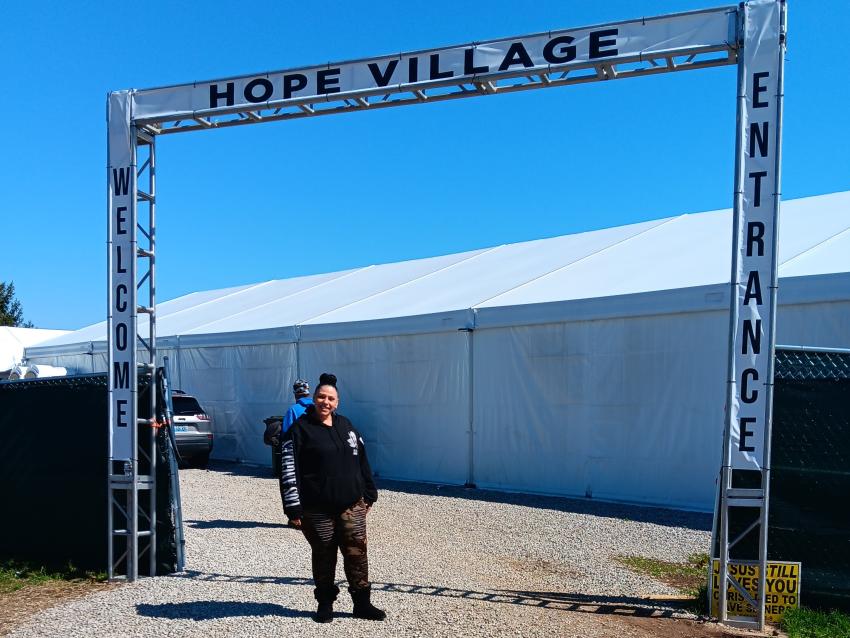
KIPRC Partners with Local Recovery Center to Address Substance Use Disparities in Kentucky's Communities of Color
Kentucky faced a pressing public health issue in 2022 with a marked increase in drug overdose deaths among Black Kentuckians and other underrepresented individuals despite an overall decline in overdose fatalities. While the number of drug overdose deaths in Kentucky has declined overall for the first time since 2018, (Source: Kentucky Injury Prevention and Research Center), the mortality data revealed an 8% rise in overdose deaths among the Black community (Source: State Medical Examiner's Office). While the strategies and efforts to prevent overdoses and reduce harm have been successful in decreasing opioid-related deaths among the White population, the recent increase in non-White overdose deaths emphasizes the need for distinct approaches and considerations that are effective for all Kentuckians.
The Kentucky Injury Prevention and Research Center (KIPRC), housed in the University of Kentucky College of Public Health, secured a $27 million grant from the Centers for Disease Control and Prevention through the Overdose Data to Action (OD2A) program to address disparities in how substance use disorder and overdose prevention approaches are targeted to different people. With this grant, KIPRC is creating initiatives distinctly tailored to prioritize people who use drugs (PWUD) within Black, Hispanic, and immigrant communities in Kentucky.
To address these disparities, KIPRC is collaborating with two Kentucky recovery community organizations: Lexington’s Voices of Hope (VOH) and Eastern Kentucky’s Kentucky River District Health Department. Using OD2A funds, KIPRC employs two recovery coaches for VOH: a bilingual recovery coach proficient in English and Spanish and a coach specializing in working with Black Kentuckians. These coaches are dedicated to linking PWUD to opioid use disorder treatment within the Black, Hispanic, and immigrant communities in Lexington.
Representation Matters
Having representation in recovery coaches is crucial for the success of the activities. VOH offers Spanish-speaking on-site Self-Management and Recovery Training (SMART) meetings, recovery coaching sessions, and harm reduction services at Centro de San Juan Diego in Lexington. Additionally, VOH provides fentanyl testing strips, safer injection kits, safer smoking kits, Narcan, pregnancy tests, emergency contraception, prenatal vitamins, and condoms to Spanish-speaking communities in Lexington such as Winburn, Cardinal Valley, and Centro de San Juan Diego.
But reaching this population has its challenges. “Structural barriers, such as poverty, racism, and differential access to social services, can significantly impact meeting participants’ social and economic needs, as well as community trust in institutions that provide recovery services,” shared Kevin Crabtree, RCC Program Coordinator at VOH. Due to this history, many community members may not feel comfortable and/or experience shame in reaching out, and most families avoid open discussions about substance use. However, the biggest barriers are usually a lack of affordable housing, public transportation, and economic opportunities for those who are seeking recovery support.
In response to these challenges, Nickol Perez, VOH bilingual recovery navigator, works to establish trust within these communities by paying visits, attentively listening, and addressing their specific needs.
Warming Up to Recovery
Hope Village provided Nickol with a prime opportunity to reach out to Hispanic Lexingtonians. The Hope Village, a warming tent provided by Lexington nonprofit the Hope Center, functions as a distribution hub for harm reduction supplies and hygiene items during the winter and became a crucial space for fostering connections within the community.
“Once we set up there, I got excited to see multiple nationalities and cultures in one place with the same needs,” said Nickol. “I assisted five Hispanics at the tent who were living there at the time with some of the simplest things that everyday people take for granted such as soap, hats, gloves, and socks to stay warm, and harm reduction supplies to possibly use safer, like Narcan and safer smoking kits.”
Part of Nickol’s success was that she represented the community she was serving. “I think it's extremely important when it comes to stigma-related barriers to have proper representation so that you have someone that understands your language, cultural background, religion, transportation, documentation, or even health insurance, and all other barriers that you may deal with so that you can be represented the best way possible and so that you can be treated with the same level of respect and with the same rights as the next person,” shared Nickol.
Looking Forward
As temperatures rise, VOH is gearing up for expanded outreach efforts. “In May, we’re set to participate in Casa De Cultura's Mother's Day event, where we'll distribute over 100 Narcan kits and essential harm reduction supplies, building on the success of last year's outreach,” stated Nickol. Additionally, VOH will collaborate with Centro De San Juan Diego's food pantry and assist Bridge the Gap’s mobile outreach unit in reaching out to the Spanish-speaking community in Cardinal Valley.
If you’d like to collaborate with VOH in outreach to the Hispanic community, contact Nickol at nickol.perez@voicesofhopelex.org
More Information
Voices of Hope offers no-cost recovery support for long-term recovery. More information can be found here.
Visit the newly updated findhelpnow.org/ky to find information about available space in treatment programs as well as naloxone distribution sites, mental health treatment facilities, and recovery houses with openings.
About KIPRC
KIPRC is a unique partnership between the Kentucky Department for Public Health (DPH) and the University of Kentucky’s College of Public Health. KIPRC serves both as an academic injury prevention research center and as the DPH’s designee or “bona fide agent” for statewide injury prevention and control.
This project is supported by the Centers for Disease Control and Prevention (CDC) of the U.S. Department of Health and Human Services (HHS) as part of an award totaling $5.4 million with 0% financed with non-governmental sources. The contents are those of the author(s) and do not necessarily represent the official views of, nor an endorsement, by CDC, HHS, or the U.S. Government. For more information, please visit CDC.gov.